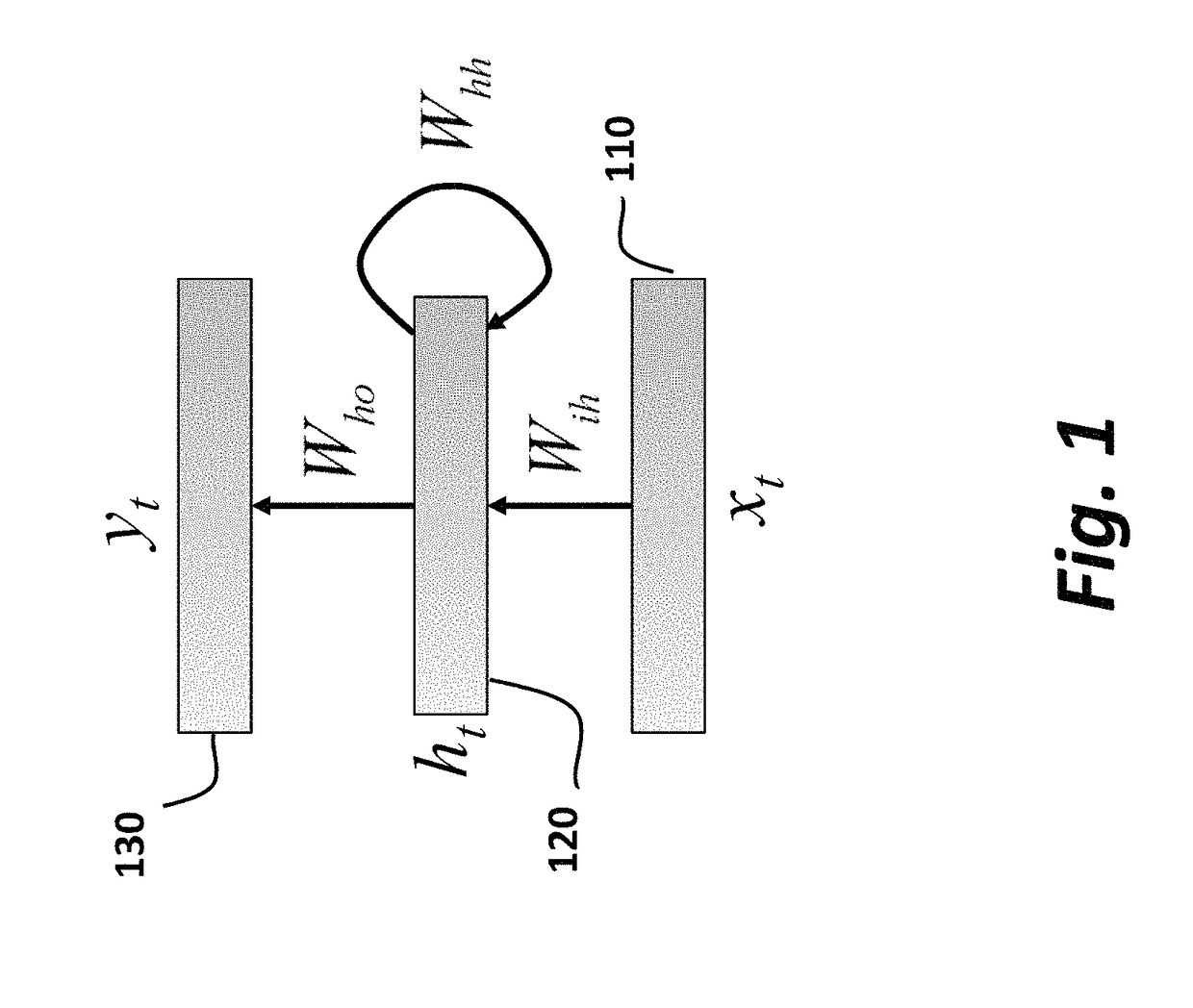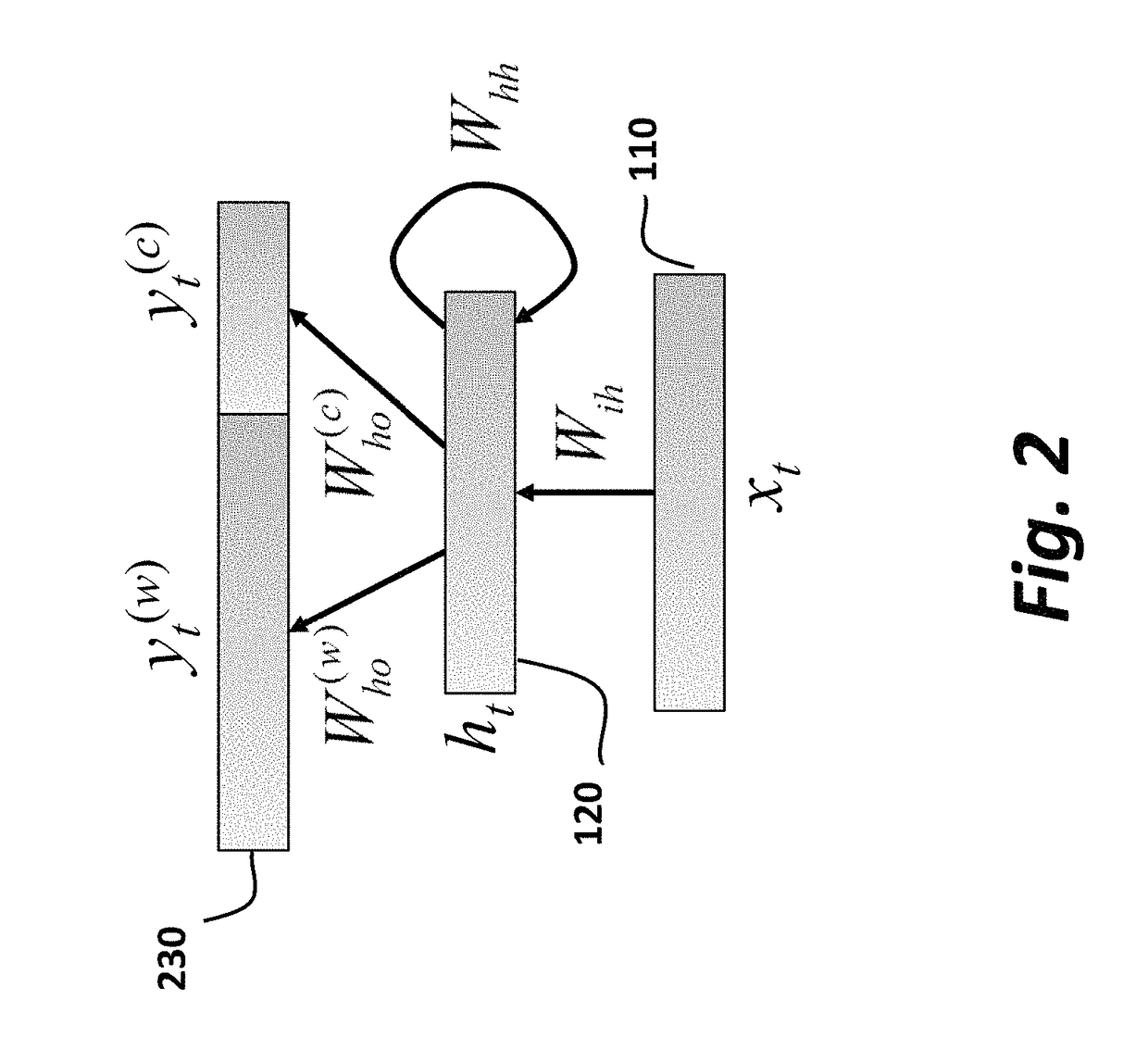Method and system for training language models to reduce recognition errors
a language model and recognition error technology, applied in the field of minimum word error, can solve the problems of not necessarily maximizing a performance measure, and the rnnlms have not been sufficiently described so far, and achieve the effect of minimizing the expected word error ra
- Summary
- Abstract
- Description
- Claims
- Application Information
AI Technical Summary
Benefits of technology
Problems solved by technology
Method used
Image
Examples
Embodiment Construction
[0025]The embodiments of the invention provide a method and system for training a language model to reduce recognition errors, wherein the language model is a recurrent neural network language model (RNNLM) that can be used for speech recognition. The RNNLM includes hypotheses.
Recurrent Neural Network Language Models
[0026]We discriminatively train a word-based RNNLM, a class-based RNNLM, and an LSTM RNNLM based on a minimum word error criterion. For simplicity of this description, we start with a word-based RNNLM as shown in FIG. 1.
[0027]Given a word sequence w1, . . . , wt, . . . , wT of a vocabulary V, the input vector xt∈{0,1}|v|110 for time index t is represented as
xt=OneHot(wt-1), (1)
where OneHot(w) denotes a 1-of-N coding of word w, which converts a word index to a one hot vector representation.
[0028]The D dimensional activation vector ht∈[0,1]D 120 in the current hidden layer are determined as
ht=σ(Wihxt+Whhht-1), (2)
where Wih∈RD×|V| and Whh∈RD×D are the input-hidden and hid...
PUM
 Login to View More
Login to View More Abstract
Description
Claims
Application Information
 Login to View More
Login to View More - R&D
- Intellectual Property
- Life Sciences
- Materials
- Tech Scout
- Unparalleled Data Quality
- Higher Quality Content
- 60% Fewer Hallucinations
Browse by: Latest US Patents, China's latest patents, Technical Efficacy Thesaurus, Application Domain, Technology Topic, Popular Technical Reports.
© 2025 PatSnap. All rights reserved.Legal|Privacy policy|Modern Slavery Act Transparency Statement|Sitemap|About US| Contact US: help@patsnap.com



